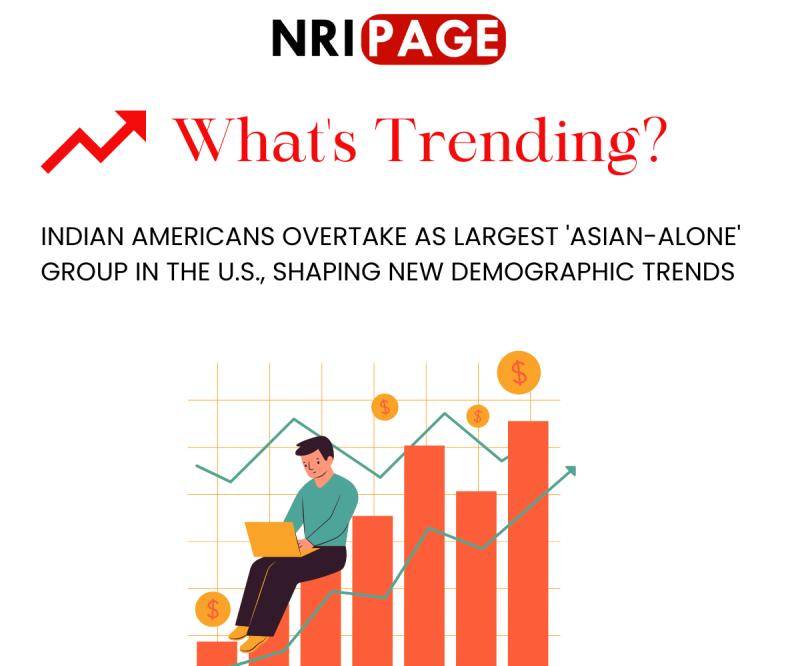Indian Americans Overtake as Largest 'Asian-Alone' Group in the U.S., Shaping New Demographic Trends

- agastya9
- 25 Oct 2024 06:32 AM
- NRI News, IndianAmericans, Asian
Indian Americans have become the largest "Asian-alone" group in the United States, recently surpassing Chinese Americans, according to new Census Bureau data. While Chinese Americans remain the largest Asian group when including multiracial individuals, the number of people identifying as solely Indian on the 2020 census has grown to nearly 4.4 million—a 55% increase over the last decade.
This shift reflects a long-standing trend since the 1990s when the U.S. tech boom coincided with the introduction of the H1B visa program for high-skilled workers. Thousands of engineers and scientists trained at leading institutions in India migrated to the U.S., where tech companies were increasingly looking to India’s skilled workforce. Unlike China, India’s familiarity with English, a legacy of British colonial influence, has also eased the transition for many professionals entering American industries.
South Asian students in high-demand fields have been drawn to the U.S. through F1 and J1 visas, and while the U.S.-born Indian American population is growing, the community is still largely composed of recent immigrants. Today, Indians represent roughly 75% of H1B visa petitioners, compared to 12% from China.
Sociologists have observed these demographic changes for years, noting that other South Asian groups are growing quickly as well. Between 2010 and 2020, the Nepalese population increased by 250%, while the Bangladeshi population rose by 85%, with family sponsorships playing a significant role in this growth.
The upcoming 2024 presidential election has highlighted the political implications of these shifts. Political experts believe that the Indian American community’s growth, along with its English proficiency and high voter engagement, could influence key swing states. Additionally, issues important to the diaspora—such as discussions around Hindu nationalism and caste—are now more visible in the U.S. Political figures of Indian descent, such as presidential candidates, are also gaining attention, showing how the community's influence is becoming more prominent in American life.
As the Census data underscores this demographic milestone, there is an opportunity for broader discussions on the evolving role of South Asians within the Asian American experience and American society as a whole.






























